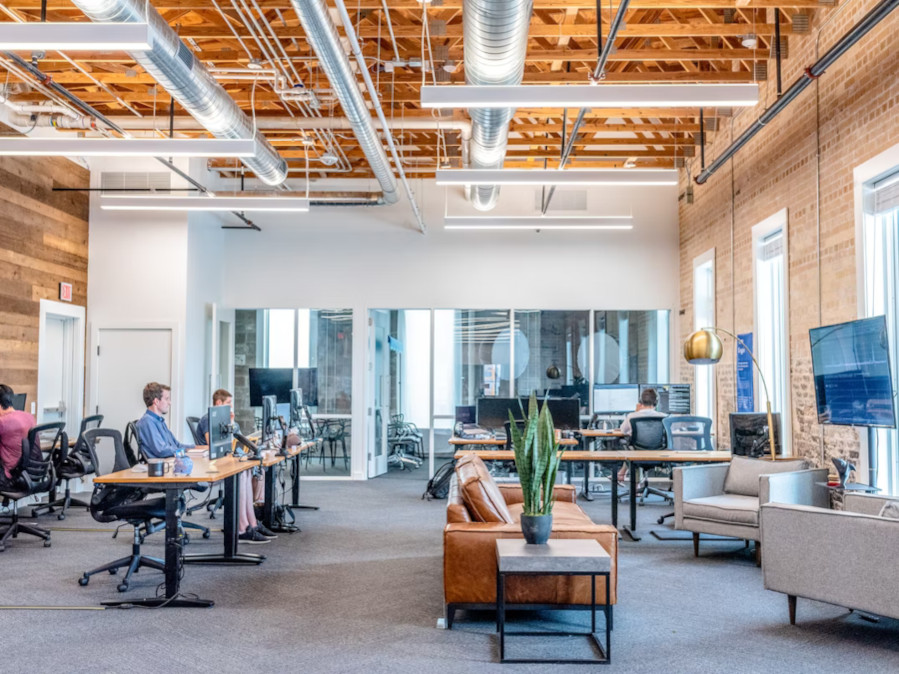Real Estate and Co-Working Spaces: The Rise of Co-Working Spaces and Their Impact on the Demand for Commercial Real Estate
Co-working spaces have become increasingly popular in recent years, offering a flexible and affordable workspace solution for freelancers, entrepreneurs, and small businesses. Co-working spaces typically provide a variety of amenities, such as high-speed internet, conference rooms, and shared kitchens, which can be costly to provide in-house.
The rise of co-working spaces has had a significant impact on the demand for commercial real estate. Traditional office space is often leased under long-term contracts, which can be a major financial commitment for small businesses. Co-working spaces, on the other hand, offer more flexible lease terms, allowing businesses to scale up or down their space needs as needed.
Reasons Why Co-Working Spaces Have Become So Popular:
Property management companies are professionals or firms dedicated to the operation, control, and oversight of real estate properties on behalf of property owners. Their primary objective is to optimize property value and ensure a positive return on investment. Here's how they achieve this:
- Flexibility: Co-working spaces offer businesses the flexibility to rent space on a month-to-month basis, which can be a major advantage for small businesses and startups.
- Affordability: Compared to traditional leases, co-working memberships can be a more cost-effective solution, especially for startups and small businesses looking to minimize overhead expenses.
- Amenities: Co-working spaces typically offer a variety of amenities, such as high-speed internet, conference rooms, modern office furniture, coffee barsm and shared kitchens, which can be costly to provide in-house.
- Community: Co-working spaces can provide a sense of community for businesses and individuals who work remotely. Co-working spaces foster collaboration and networking opportunities, which can be highly beneficial for startups, freelancers, and even larger enterprises seeking innovative solutions and partnerships.

The Impact on Commercial Real Estate
The rise of co-working spaces has had a mixed impact on the demand for commercial real estate. On the one hand, co-working spaces have taken some market share away from traditional office space providers. On the other hand, co-working spaces have also helped to create new demand for commercial real estate in areas where they are located.
Co-working spaces are often located in urban areas and in close proximity to public transportation and other amenities. This has helped to revitalize some urban neighborhoods and has made them more attractive to businesses and residents.
Overall, the rise of co-working spaces has had a positive impact on the commercial real estate market. Co-working spaces have provided a much-needed alternative to traditional office space and have helped to make commercial real estate more accessible to a wider range of businesses.
Here are some additional thoughts on the impact of co-working spaces on the demand for commercial real estate:
- Increased Demand for Flexible Spaces: The surge in demand for co-working spaces has led to a need for commercial real estate spaces that cater to these flexible office solutions. As a result, developers and property owners are diversifying their portfolios to include spaces designed for co-working providers.
- Adaptive Reuse: Co-working spaces are often located in unique or repurposed buildings, such as old warehouses or historic structures. This has given rise to a trend in adaptive reuse, where existing structures are transformed into modern and attractive co-working environments, breathing new life into previously underutilized spaces.
- Stricter Lease Terms: Traditional commercial real estate leases are now being influenced by the flexible lease terms offered by co-working providers. Landlords are increasingly willing to offer shorter leases and more flexible arrangements to meet the evolving needs of tenants.
- Higher Quality Spaces: As co-working providers compete for members, they invest in creating high-quality, well-designed spaces. This has pushed traditional office landlords to elevate the quality of their properties to remain competitive in the market.
- Market Resilience:The co-working sector has demonstrated its resilience during economic downturns, as many businesses have turned to flexible office solutions to downsize or adapt to remote work. This resilience is appealing to investors seeking stability in their portfolios.
Challenges and Considerations
While the co-working industry has brought numerous benefits to the commercial real estate market, there are challenges and considerations to bear in mind:
- Market Saturation: As the co-working industry continues to grow, concerns of market saturation and competition among providers have arisen. It is essential for real estate professionals to carefully assess market dynamics and demand in their specific regions.
- Long-Term Viability: The long-term viability of co-working is still a subject of debate. Economic shifts, changes in remote work trends, and shifts in user preferences may influence the stability of the co-working industry.
Summary
The rise of co-working spaces has undeniably transformed the landscape of commercial real estate. This evolution reflects a growing demand for flexible, collaborative, and cost-effective office solutions. Developers, property owners, and investors have recognized the importance of adapting to this trend, leading to a dynamic and evolving real estate market. The impact of co-working on commercial real estate is substantial, and its influence is expected to persist as both industries continue to adapt to the changing needs of professionals and businesses in the modern world.
